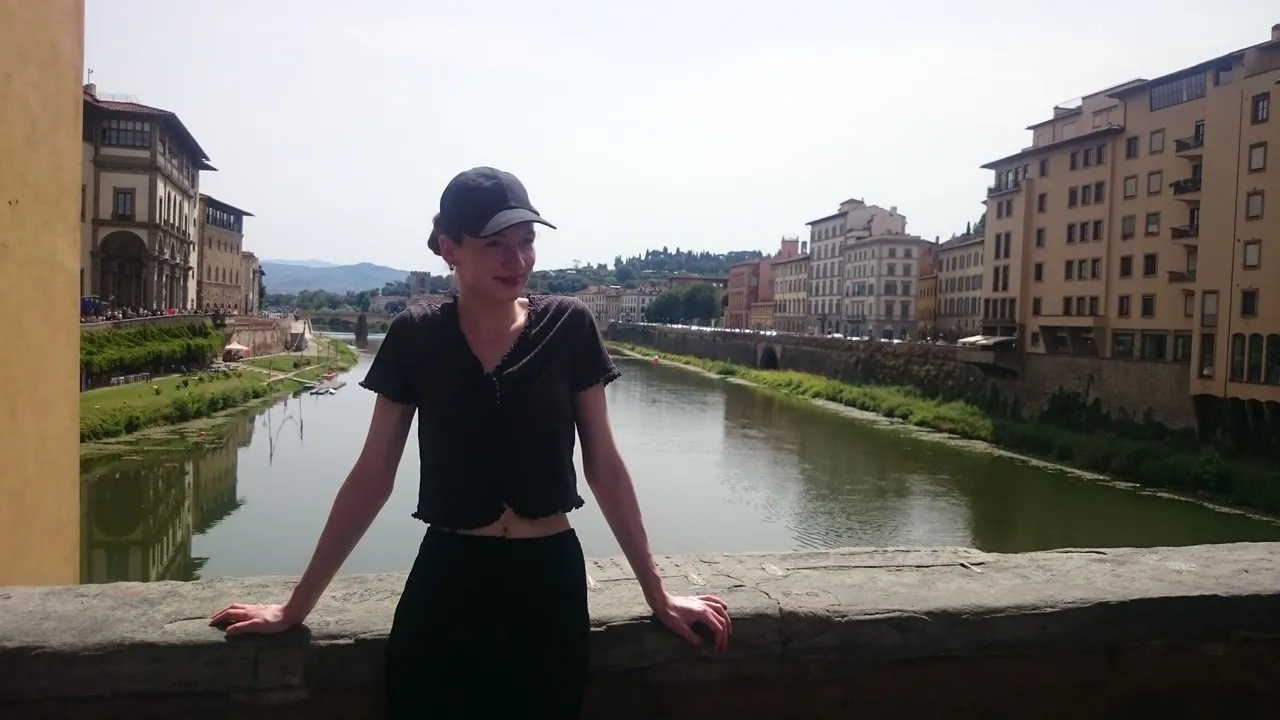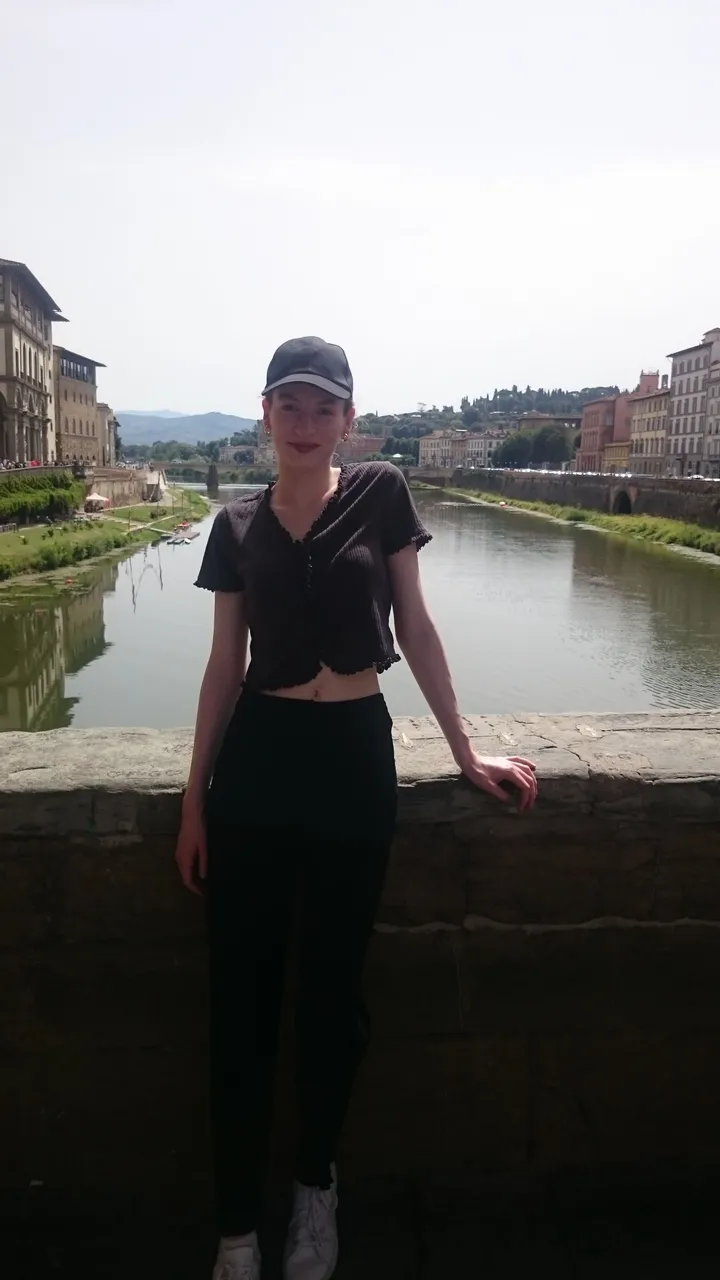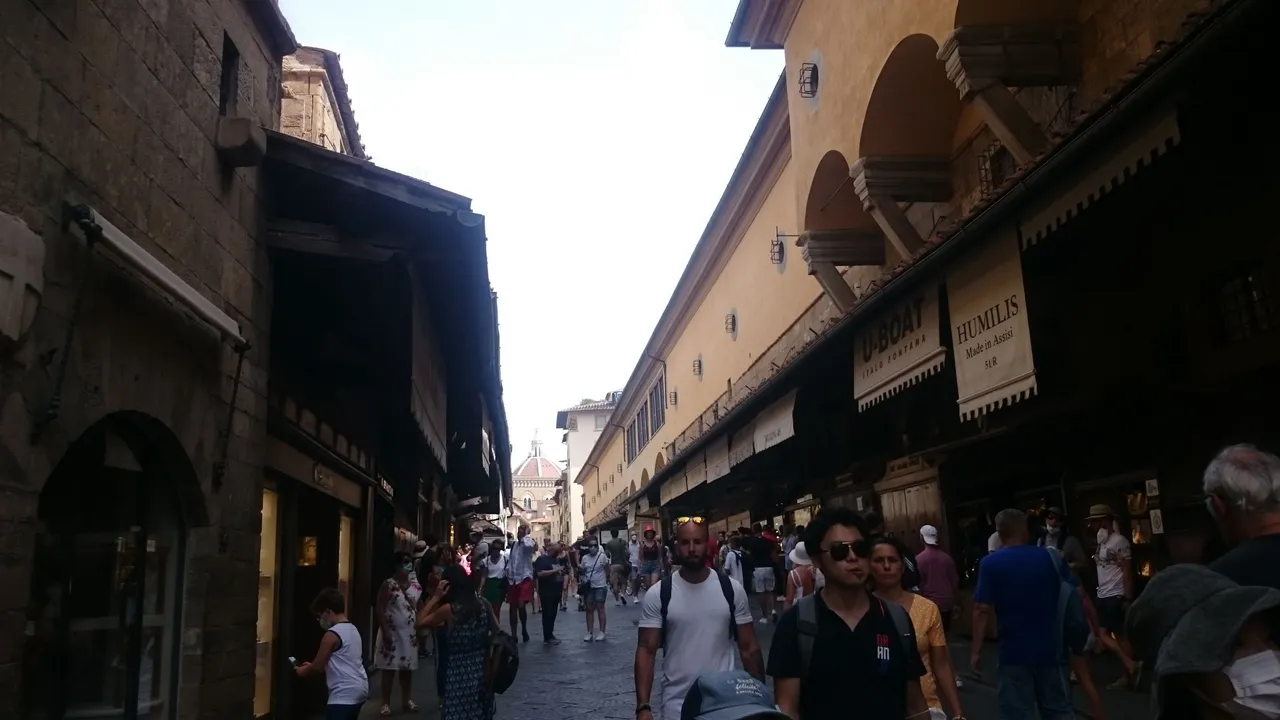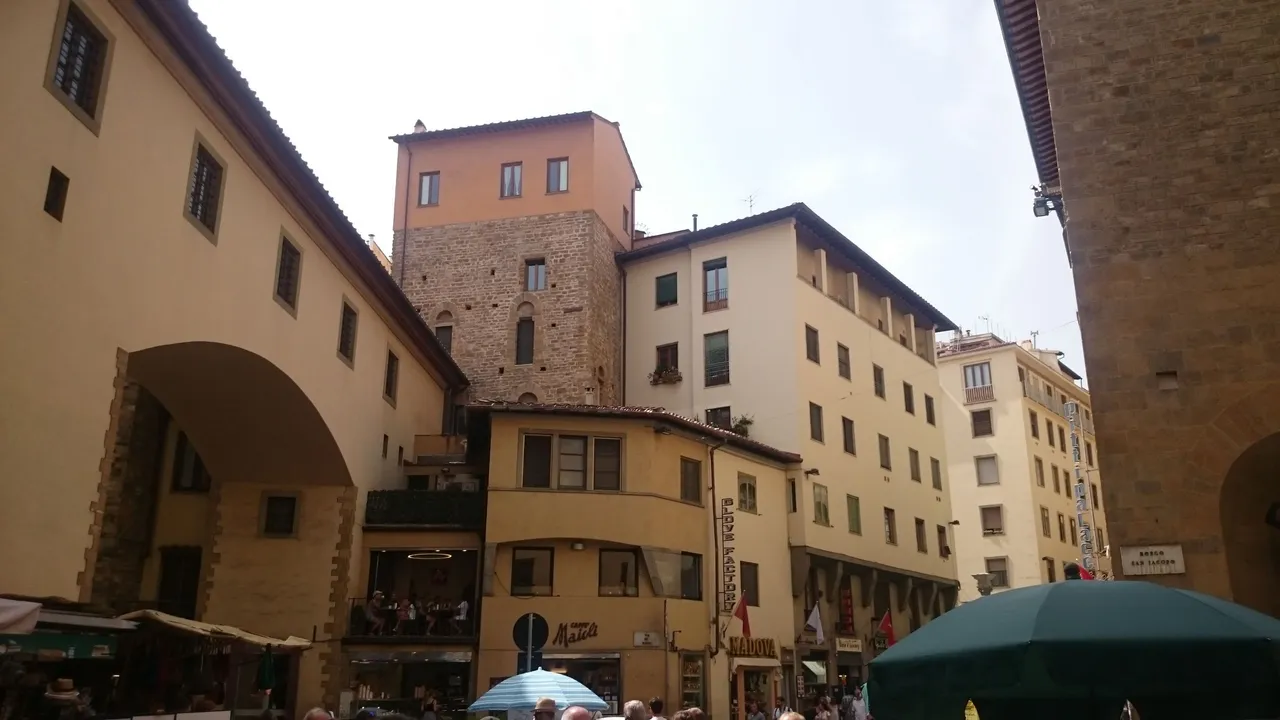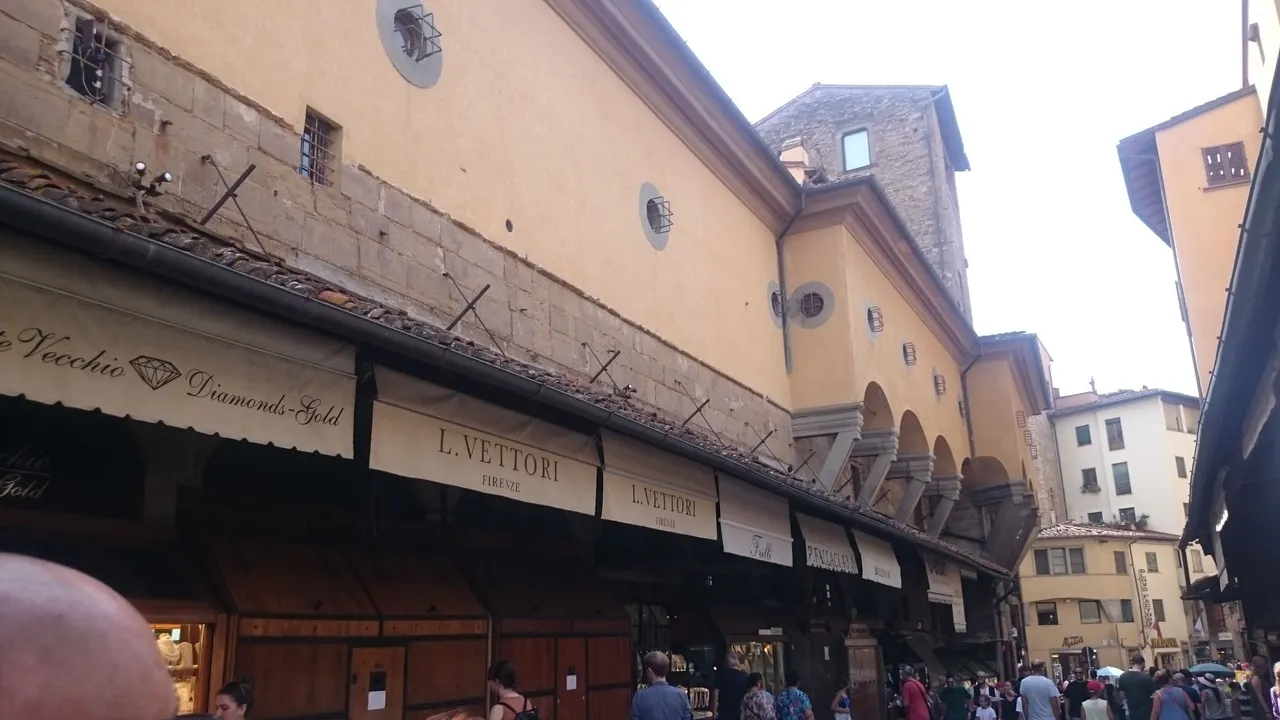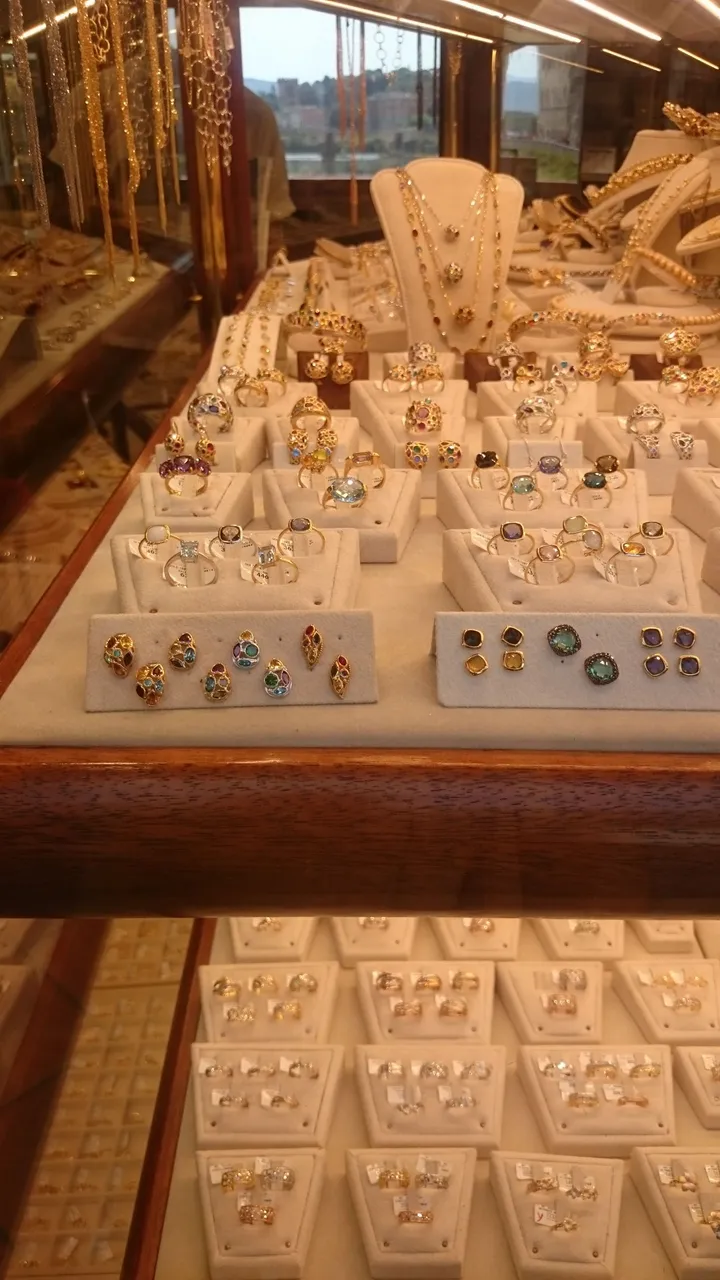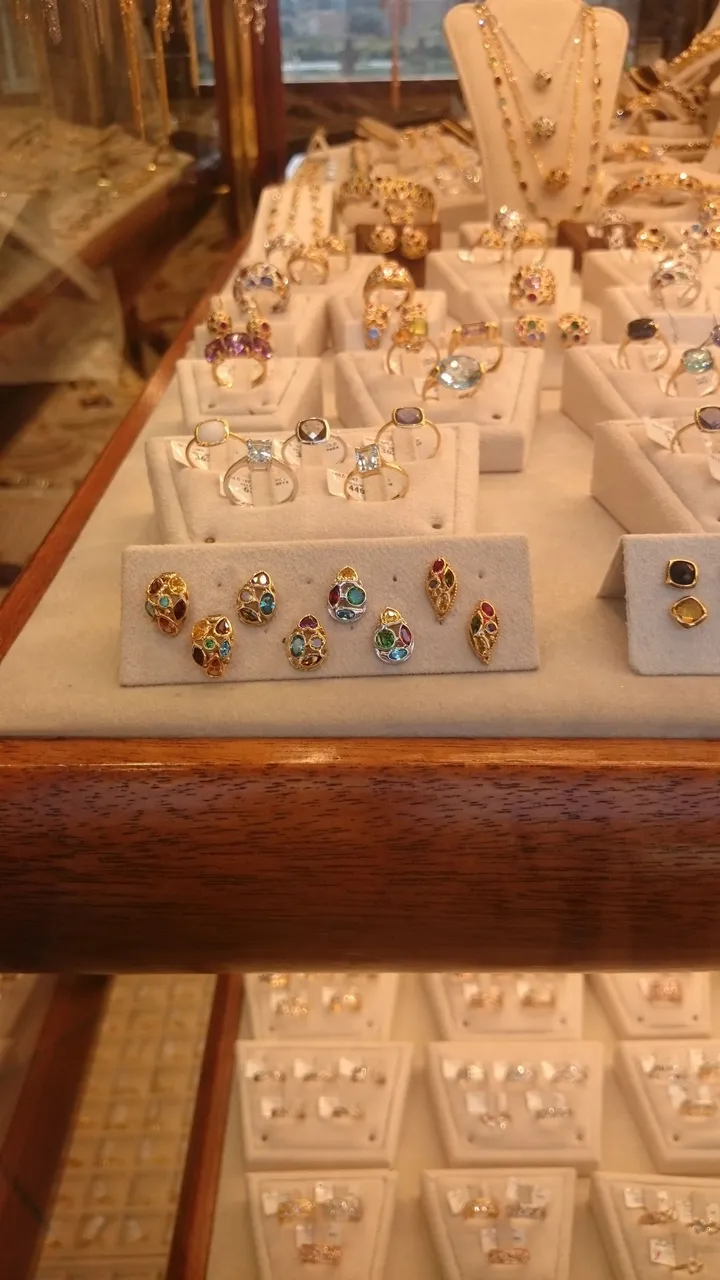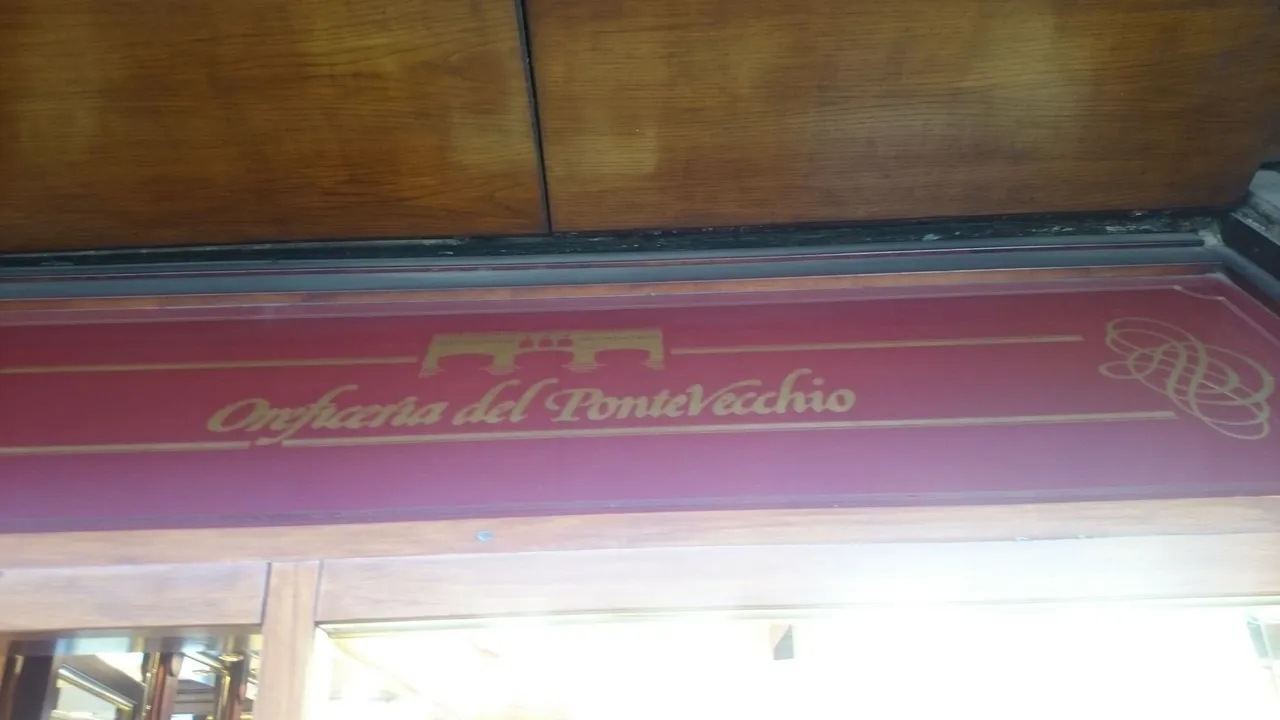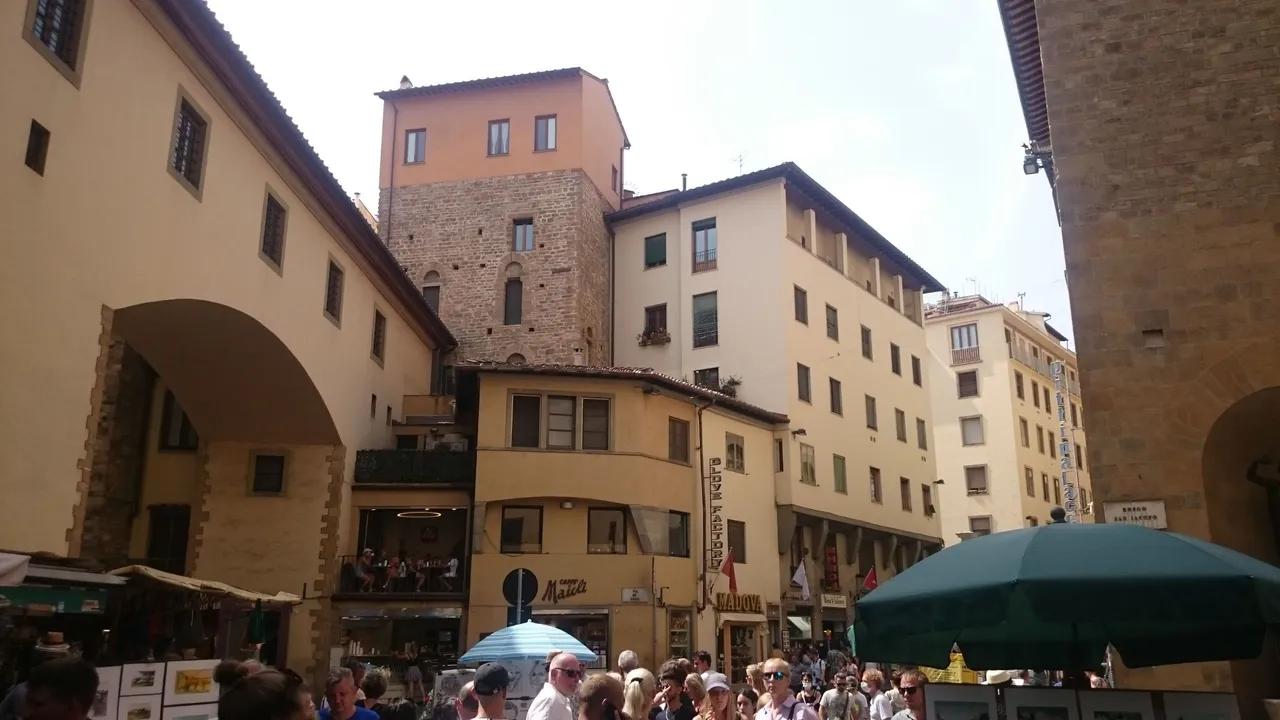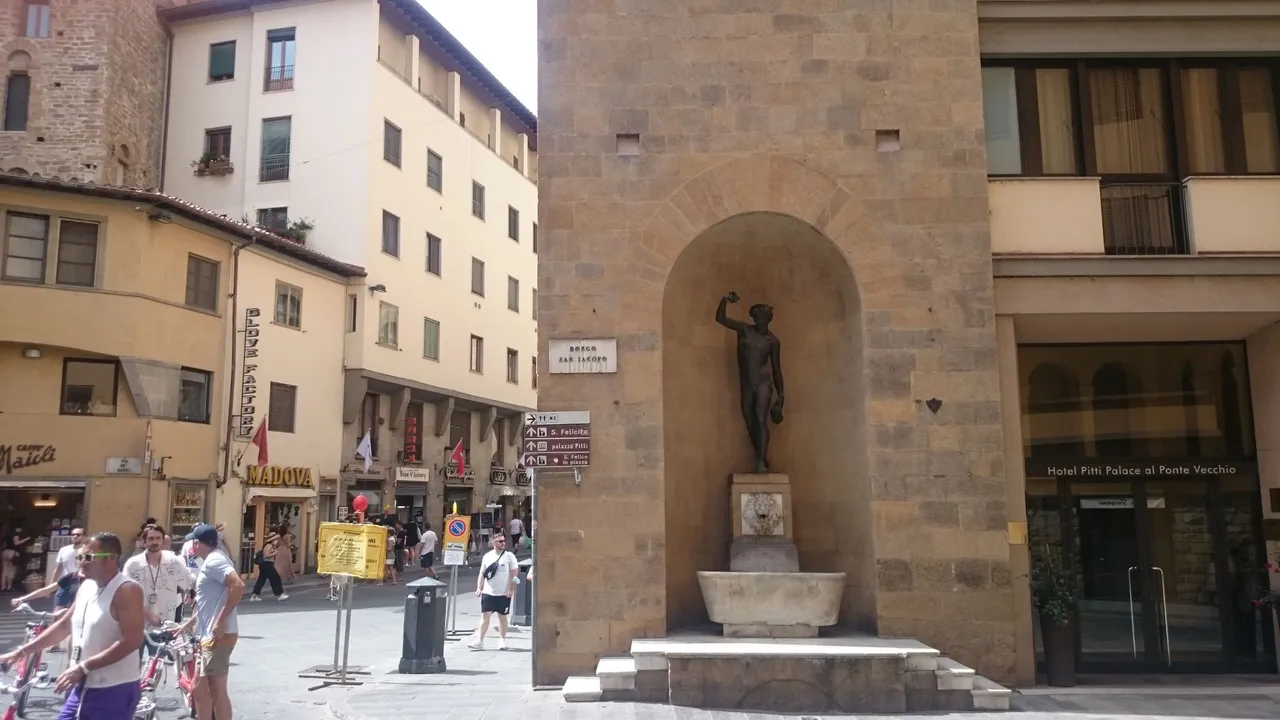Hey guys,
today I want to tell you something about my day trip in Florence. This summer I flew with a friend to Italy to the Cinque Terre, which is characterized by five cute, colorful fishing villages. Better said we flew from Frankfurt airport to Pisa and from there we went on by train to the Cinque Terre.
If you want to know more about the fishing villages, feel free to check out my recent posts on my blog. Here I have presented all five villages of the Cinque Terre: Vernazza, Manarola, Monterosso, Corniglia and Riomaggiore.
As beautiful as the villages were, we wanted to spend one of the four full days we had there outside of the Cinque Terre region, in a larger city in Italy. The next largest cities were Bologna and Florence, and since there are more sights to see in Florence, we ended up choosing Florence. When I go to Italy again, however, I will definitely check out Bologna as well.

Ponte Vecchio, the landmark of Florence
From Vernazza we traveled to La Spezia, from there to Pisa and then by train to Florence. The whole travel took about three and a half hours. That's why we got up early in the morning around 5 o'clock, so we could have a few hours in Florence.
One of the sights that I liked the most in Florence, I would like to introduce to you today: The Ponte Vecchio. Okay, admittedly, I picked probably the most famous sight in Florence for this post. But since it's my first post about Florence, I thought it would be a good place to start. The Ponte Vecchio was also one of the first sights we visited in Florence.
The Ponte Vecchio is the landmark of Florence. And what's more, it is the oldest bridge built over the Arno River. It is also one of the oldest arch bridges in the world. That's where the name "Ponte Vecchio" comes from - because it means "old bridge". The Arno River is a whole (!) 200 kilometers long.
Many beautiful and expensive jewelry stores
The bridge leads from the outer districts to the center of Florence. On it you can find many beautiful and expensive jewelry stores. The jewelry stores are located to the left and right of the bridge, they are relatively small, but very chic and high quality stores. On the photos below you can admire a few pieces of jewelry from one of the stores, I found the jewelry so beautiful that I just had to photograph it. Maybe I can afford it someday haha.
What I actually found very interesting: the beautiful jewelry stores that make the bridge so unique, among other things, have been on the bridge relatively early. In 1333, the bridge was built and completed in 1345, along with the buildings on both sides.
A wooden bridge previously stood where the Ponte Vecchio now stands
Only the jewelry stores in the buildings did not exist directly from the beginning.
And this is how the famous stone bridge came about: in 1333, the first year of construction of the bridge, a flood inundated large parts of Florence. Before construction began, a wooden bridge stood on the site where the Ponte Vecchio now stands. This was also destroyed. As a result, the current bridge was built of stone. The many stores on the side of the bridge stand together without gaps, even then. The entrance of the stores faces the bridge.
The rear part of the stores, facing the Arno, has balconies. Some of them even overhang the railing of the bridge. This can be seen well in the first photos.
Only in the middle of the bridge the stores are not close together, so that here you can also lean against the bridge railing and take beautiful photos of the Arno from the bridge.
At this point there are three arcade arches upstream to the east and downstream. There is also a portrait statue, the envenuto Cellinis. I must confess, the bridge did not look very spectacular to me from the outside, but once on the bridge itself, you understand why it is so famous.
Before the jewelry stores af the bridge were here mainly butchers and tanners. However, in 1565, for hygienic reasons, they were replaced by goldsmiths by decree, because they no longer threw waste into the Warno as the butchers and tanners had done before. And so, little by little, there were more and more jewelers on the bridge.
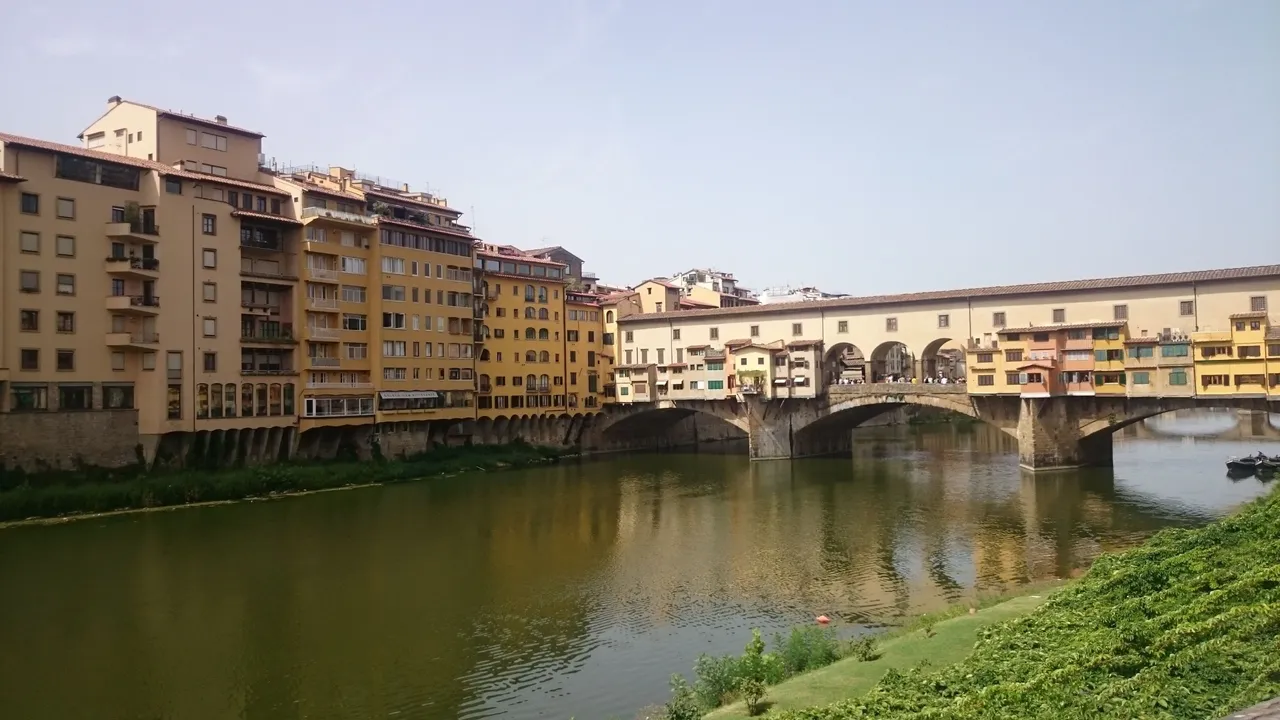
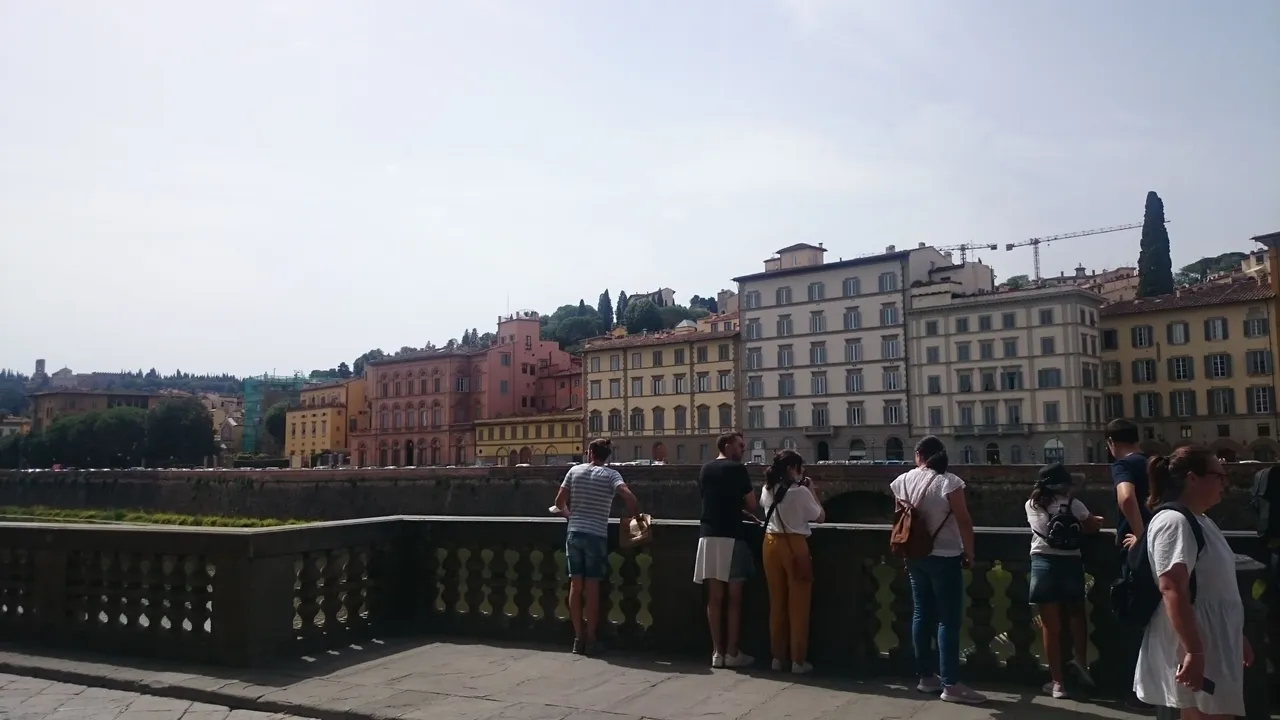
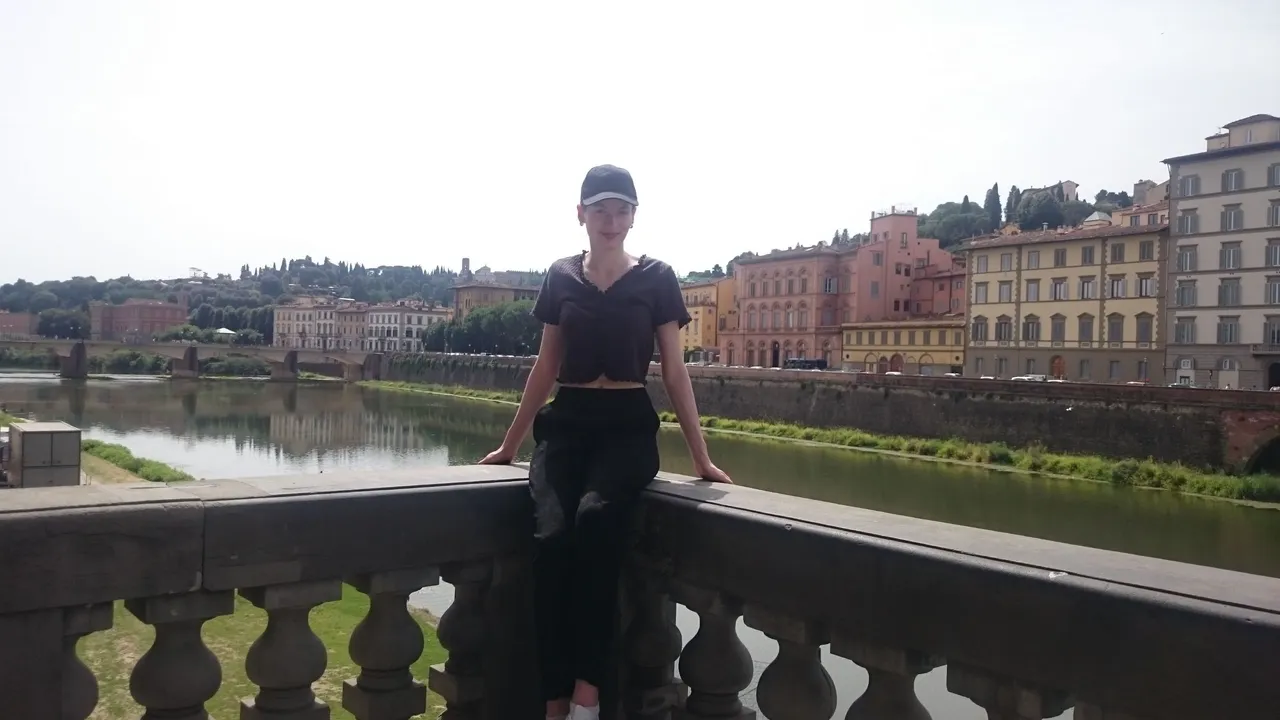
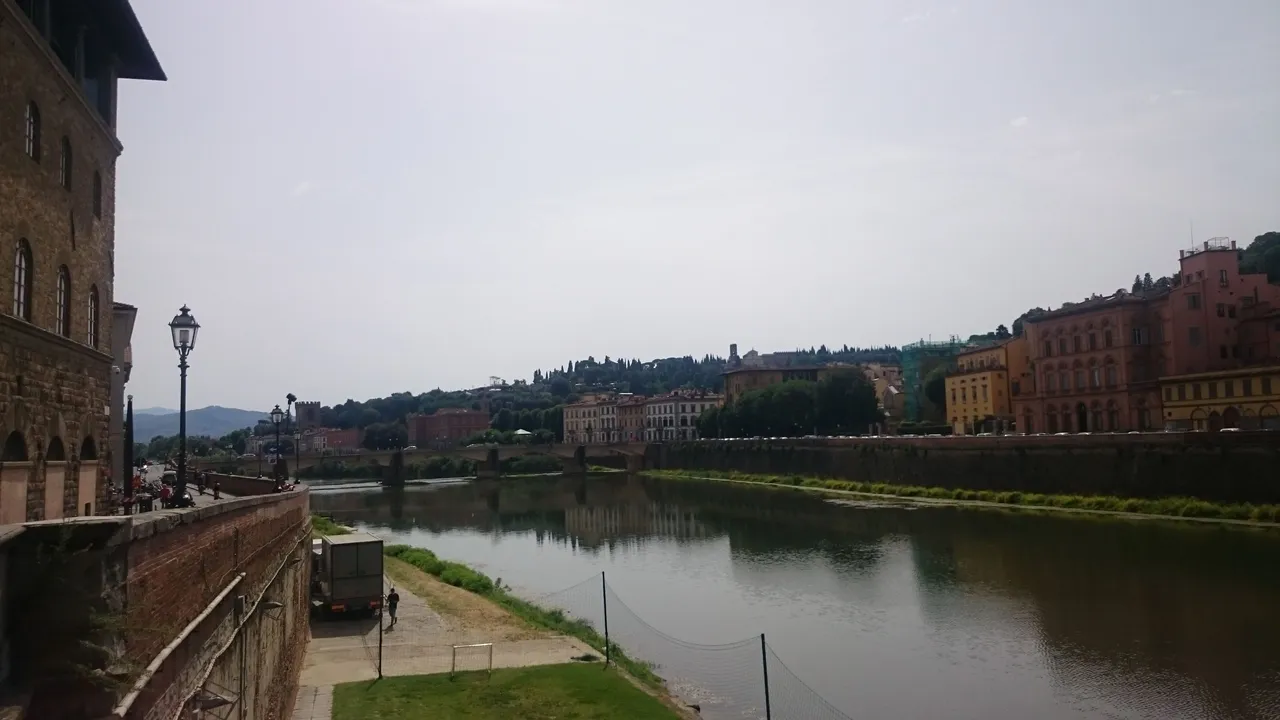
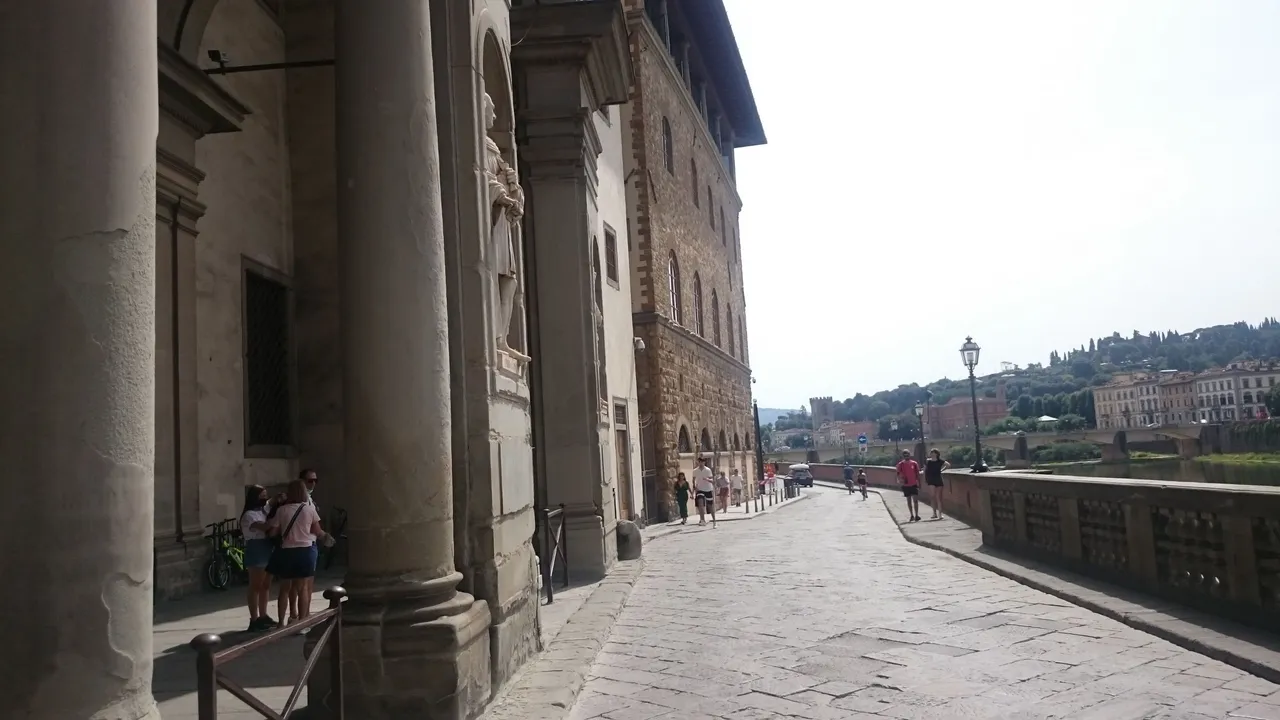

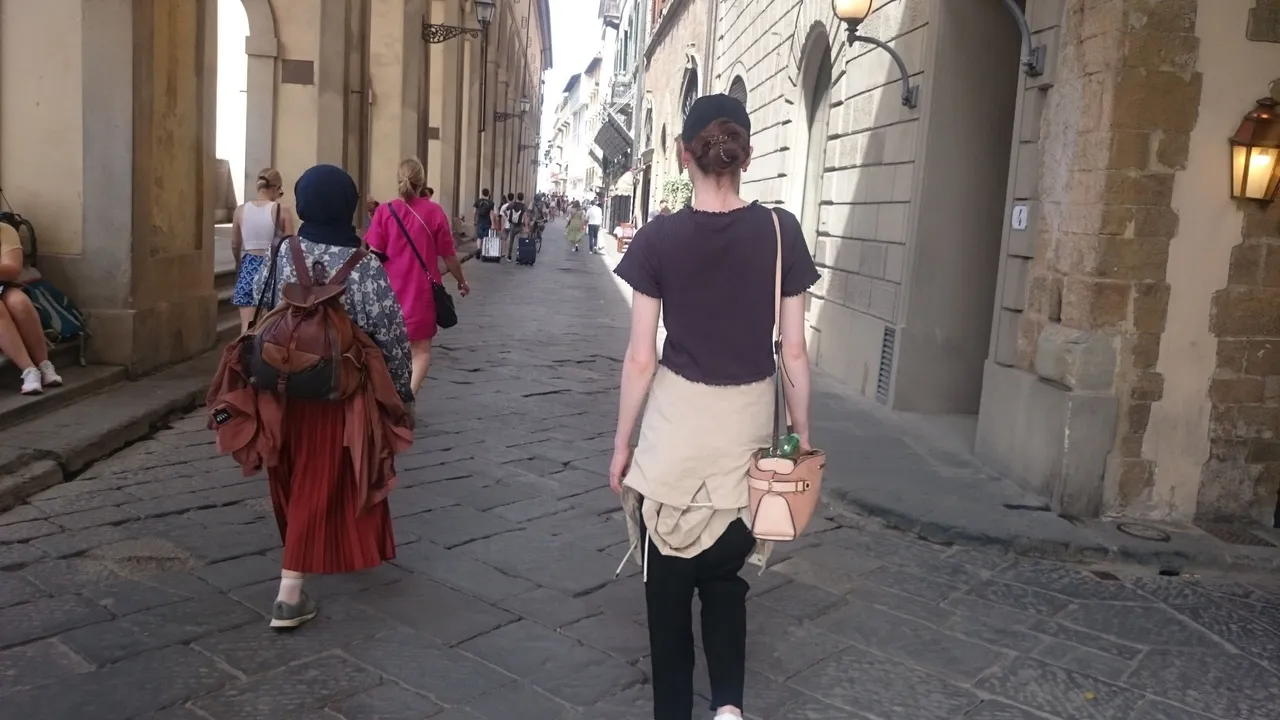
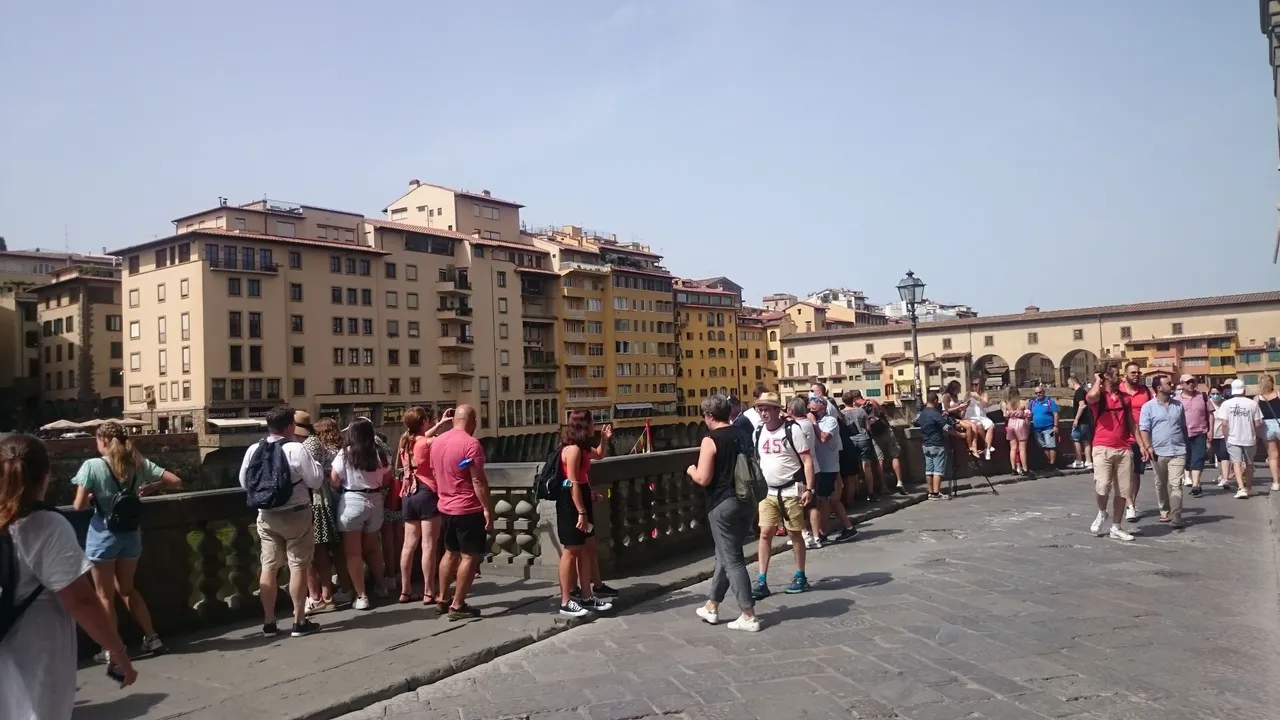
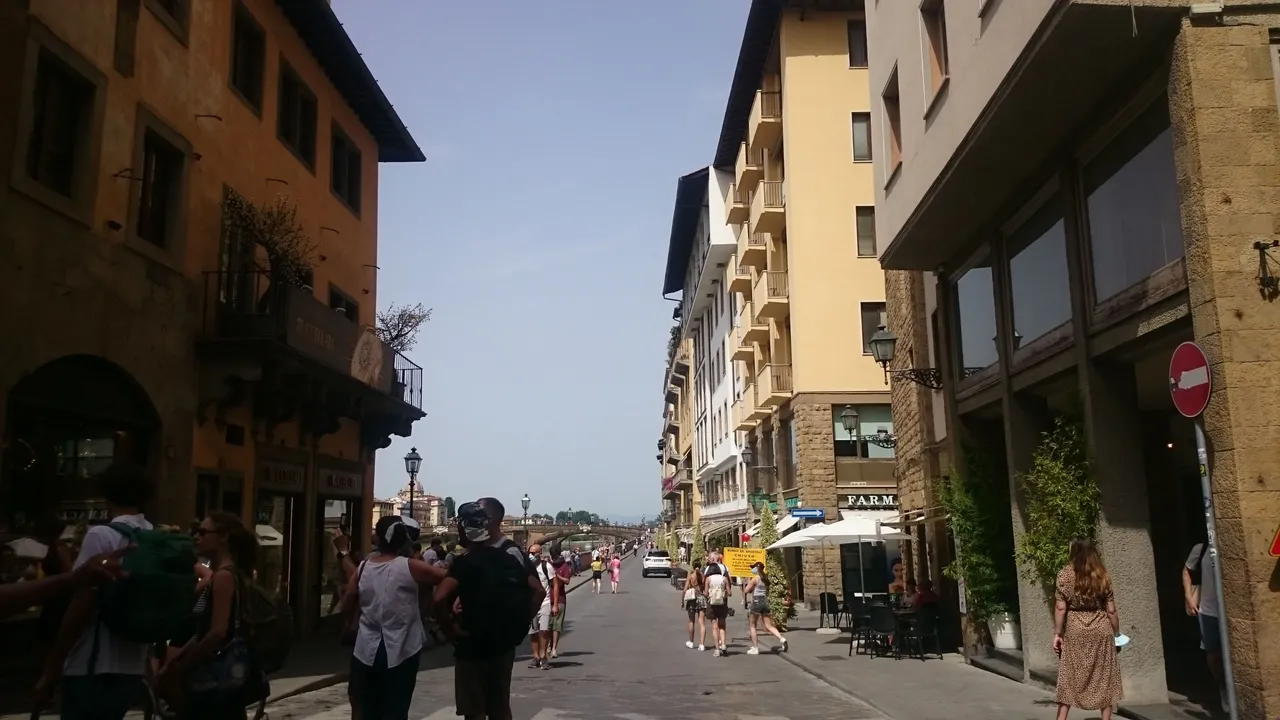
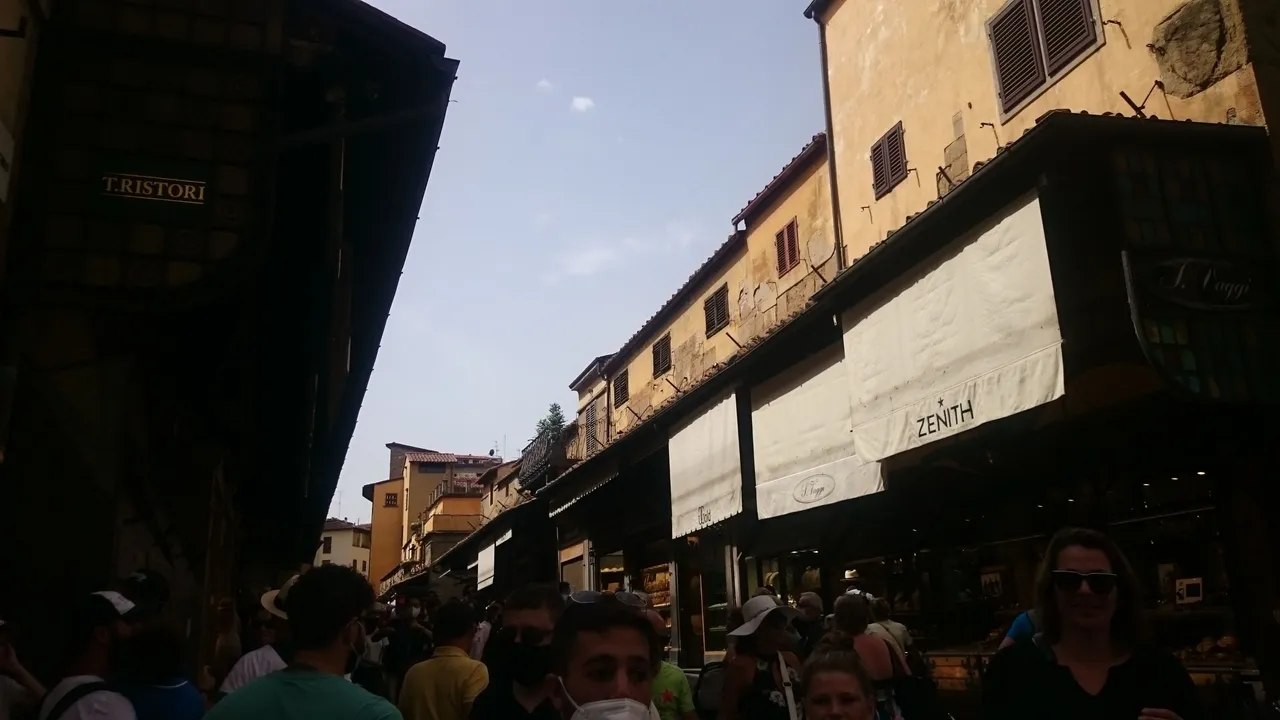
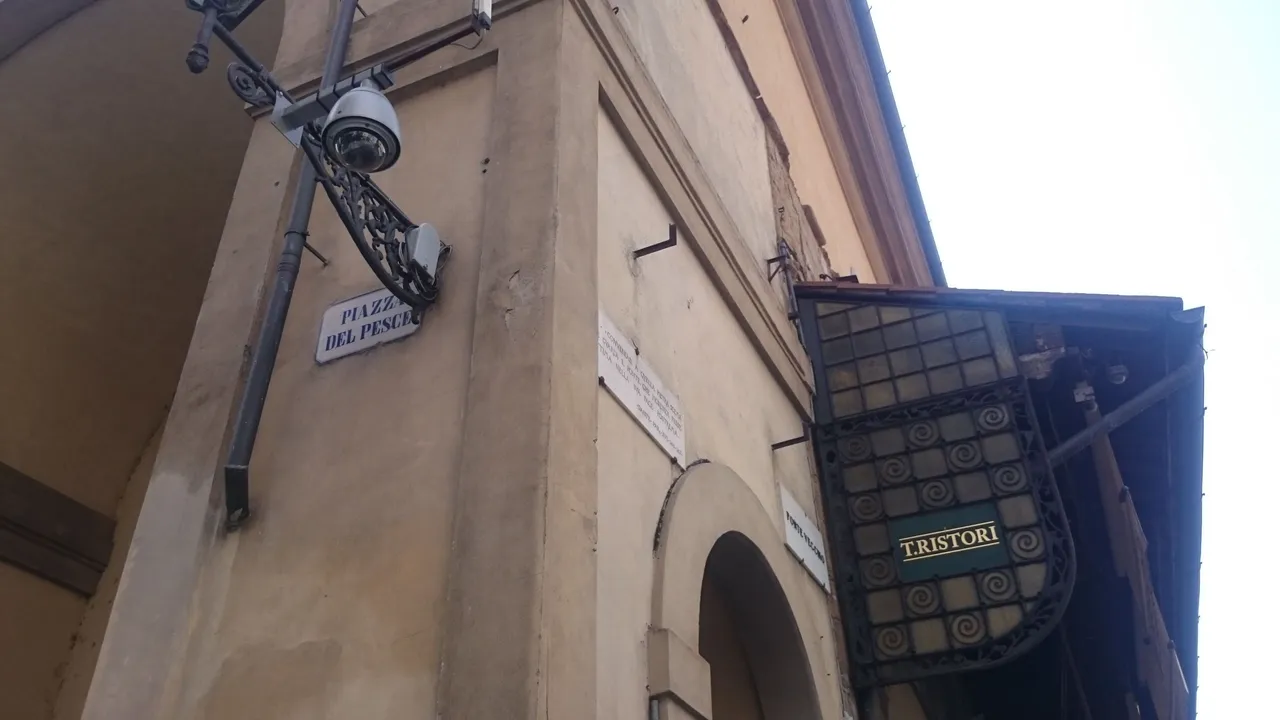
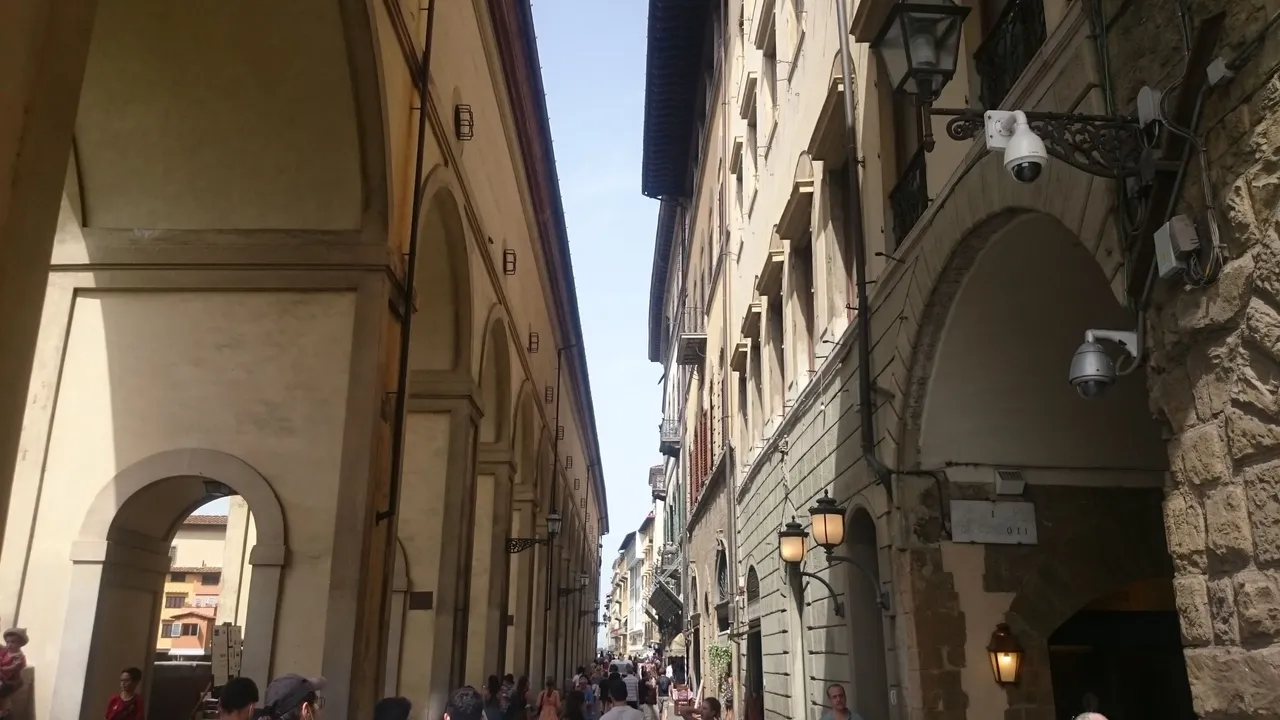
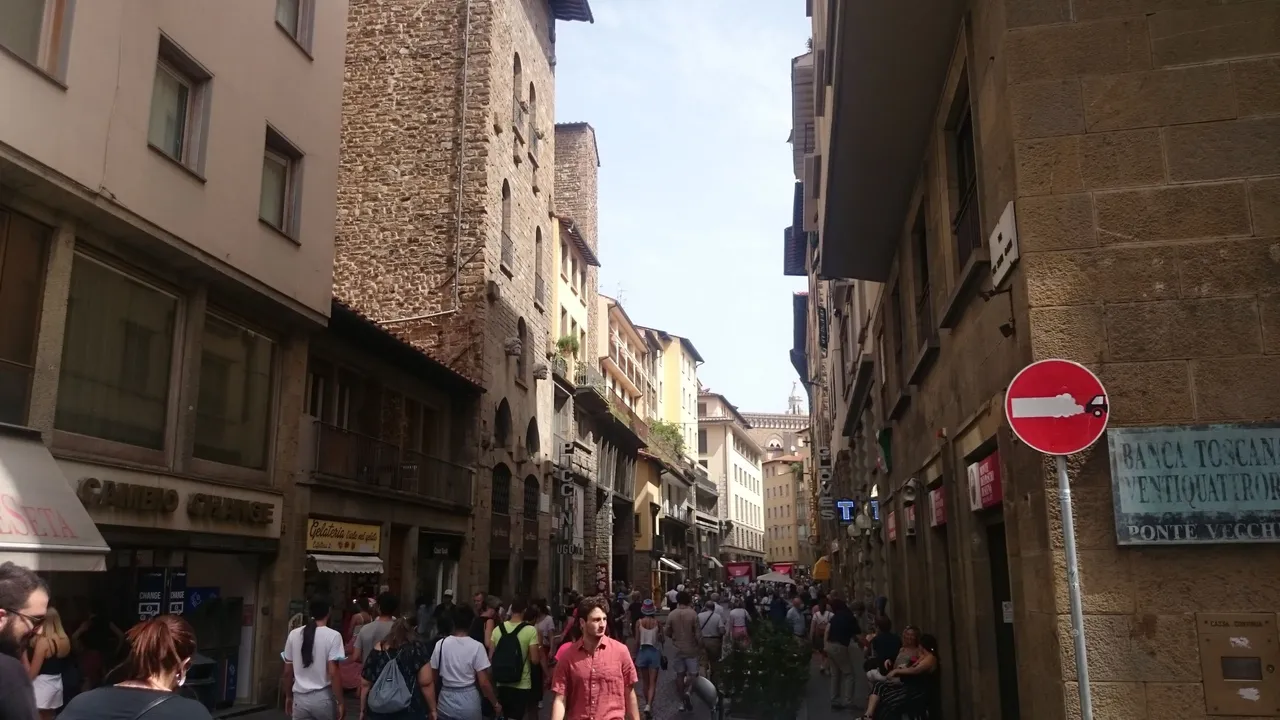
The bridge as a "survivor" of the World War II
I think on the pictures the bridge looks relatively narrow and small. But you should not be deceived by this. The bridge is larger than expected and there is a lot of hustle and bustle here. Small tip: Watch out for pickpockets here.
If you are ever in Florence, you should not miss to visit the bridge and walk across it. Just to admire the beautiful jewelry ;) You probably won't get around it anyway, because it's right in the heart of Florence.
I also found it very impressive that the bridge even "survived" World War II.
The Ponte Vecchio was the only bridge in Florence that was not destroyed by the war. Instead, the bridge was blocked for its own protection with the remains of the surrounding destroyed buildings.
How did you like my post about the Ponte Vecchio? Have you ever been to Florence, and if so, how did you like the bridge? Feel free to write your feedback in the comments. See you next time!
